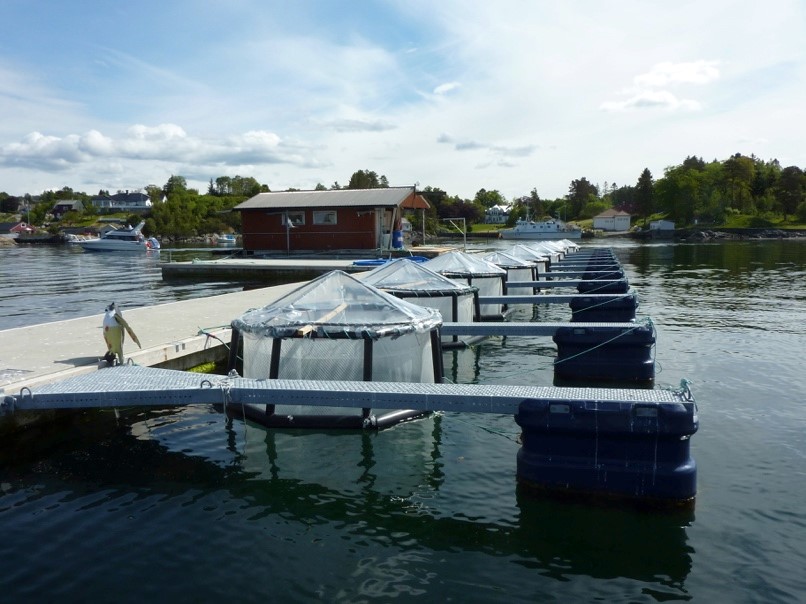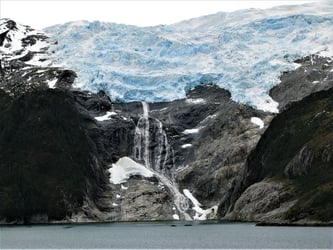Harry Nelson, Frances Buerkens, Kay Johnson and CEO Kent Peterson recently had the opportunity to attend the 2017 Association for the Sciences of Limnology and Oceanography (ASLO, http://aslo.org) Ocean Sciences Meeting: Mountains to the Sea in Honolulu, Hawaii where FIT held a FlowCam Workshop, titled “FlowCam and FlowCam ‘Macro’ Workshop” and hosted in-booth trainings with existing FlowCam users. We were the most attended booth, and it certainly helped that we wore matching Hawaiian attire to stand out and reunite with our long-time FlowCam customers from all around the globe.
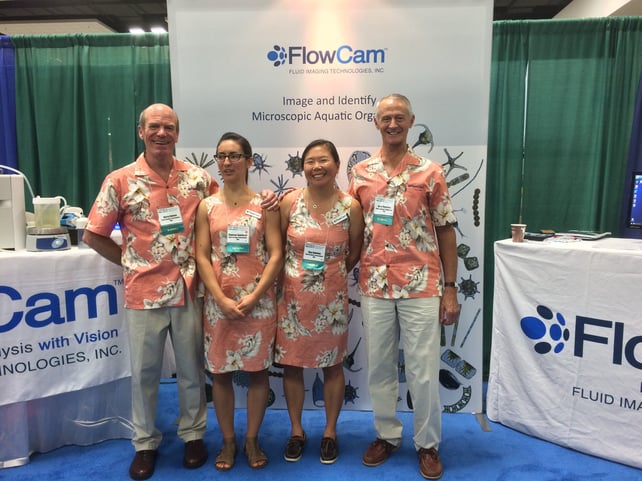
One of our workshop and in-booth training participants as well as experienced FlowCam user Stella Berger, (Leibniz Institute of Freshwater Ecology and Inland Fisheries - IGB ) is a co-author of a recently published paper in Marine Ecology - “Iron availability modulates the effects of future CO2 levels within the marine planktonic food web,” MEPS 565:17-33 (2017)
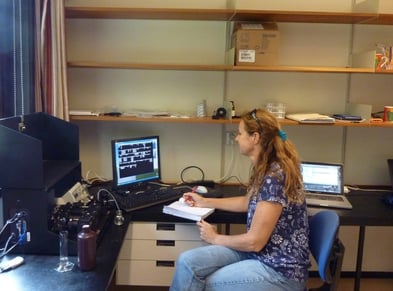 This research paper is a quintessential example of how using both traditional flow cytometry and FlowCam technology together can be used to analyze the full size range from picophytoplankton (<20µm) and bacterioplankton to phytoplankton (>20µm) and microzooplankton to answer a contemporary, relevant scientific question. In this article, the authors investigate how elevated CO2 levels and subsequent ocean acidification (OA) will affect phytoplankton population during conditions of different iron (Fe) availability, specifically the coccolithophore, Emiliania huxleyi. A wide range of phytoplankton was quantified throughout this experiment using both a traditional flow cytometer and the FlowCam particle analyzer.
This research paper is a quintessential example of how using both traditional flow cytometry and FlowCam technology together can be used to analyze the full size range from picophytoplankton (<20µm) and bacterioplankton to phytoplankton (>20µm) and microzooplankton to answer a contemporary, relevant scientific question. In this article, the authors investigate how elevated CO2 levels and subsequent ocean acidification (OA) will affect phytoplankton population during conditions of different iron (Fe) availability, specifically the coccolithophore, Emiliania huxleyi. A wide range of phytoplankton was quantified throughout this experiment using both a traditional flow cytometer and the FlowCam particle analyzer.
Pictured above: Stella Berger using a legacy FlowCam particle analyzer to quantify phytoplankton (>20um)
Pictured below: Replicate mesocosm experiments used to analyze the effects of elevated CO2 levels and Fe on phytoplankton populations, Raunefjord (60.39oN, 5.32oE) off of Bergen, Norway from June 5-27, 2012.
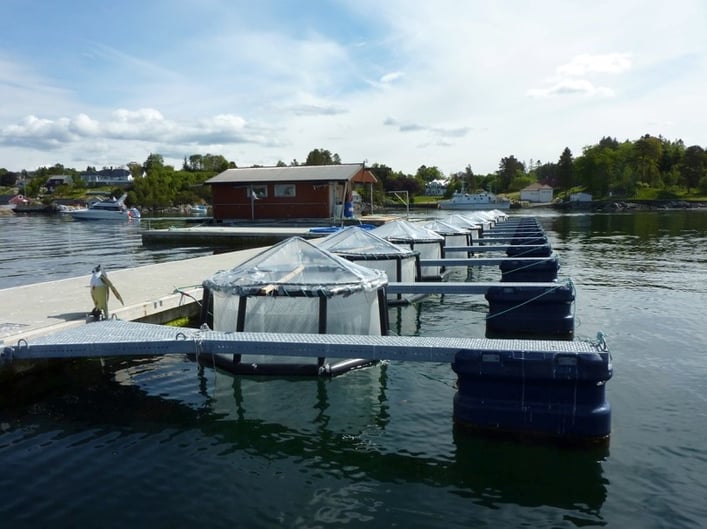
Pictured below: Manual picture selection of ciliates for each mesocosm taken by Stella Berger.
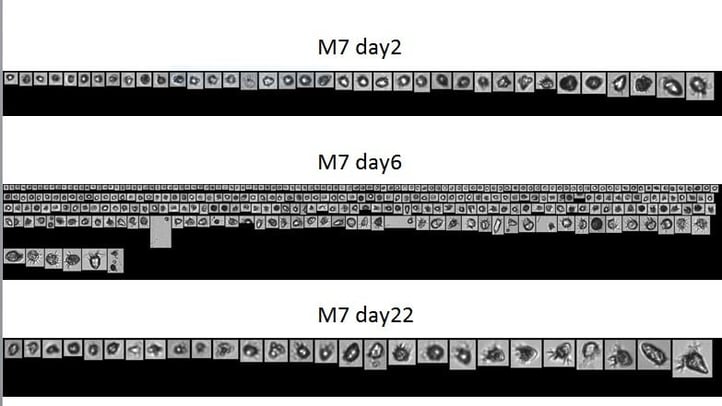
The FlowCam technology has the capability to measure the size range where traditional flow cytometers leave off. Traditional flow cytometers are routinely used to analyze and quantify picophytoplankton and bacterioplankton based upon the inherent pigments or nucleic acid fluorescent stains. Whereas, FlowCam technology is most suitable at measuring phytoplankton and zooplankton from 2µm up to 5mm range. In addition, the FlowCam particle analyzer and Visualspreadsheet software can capture an image for each of the particles counted and measure a variety of morphological characteristics based upon the relationships between pixels, light intensity, and size.








